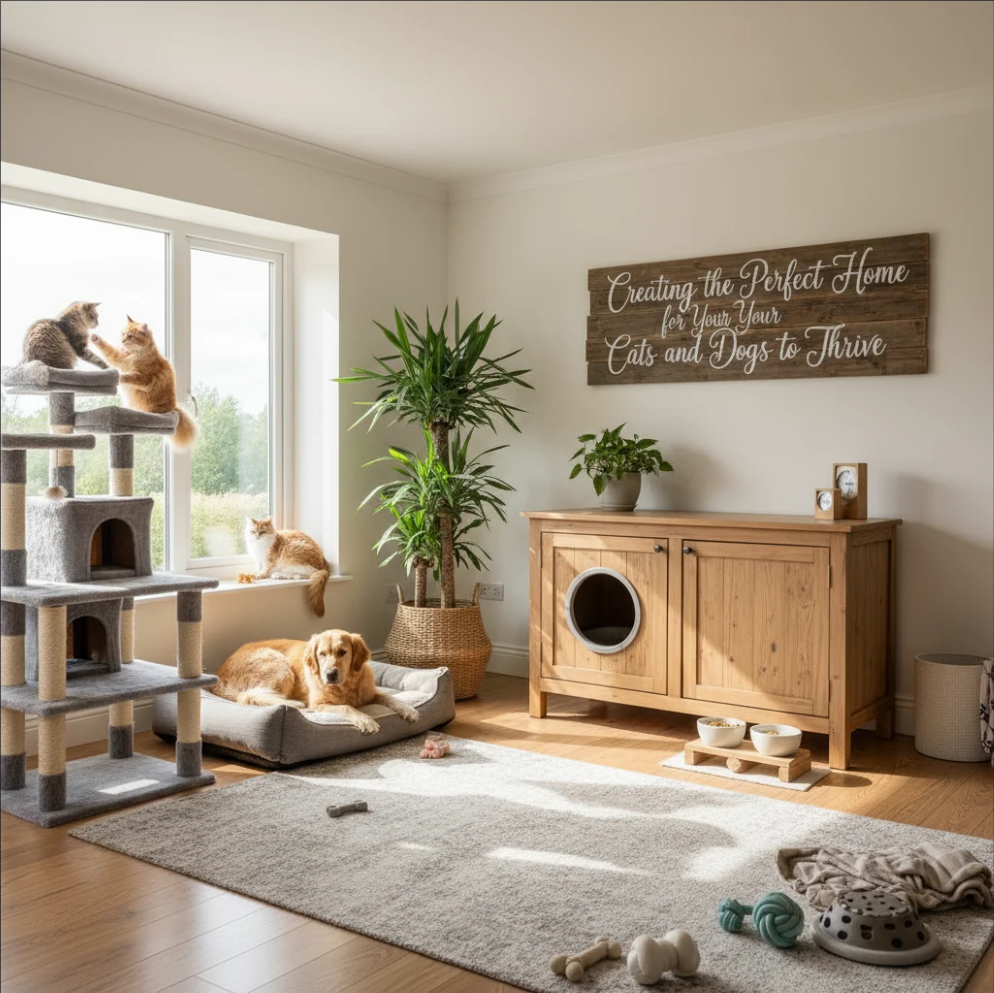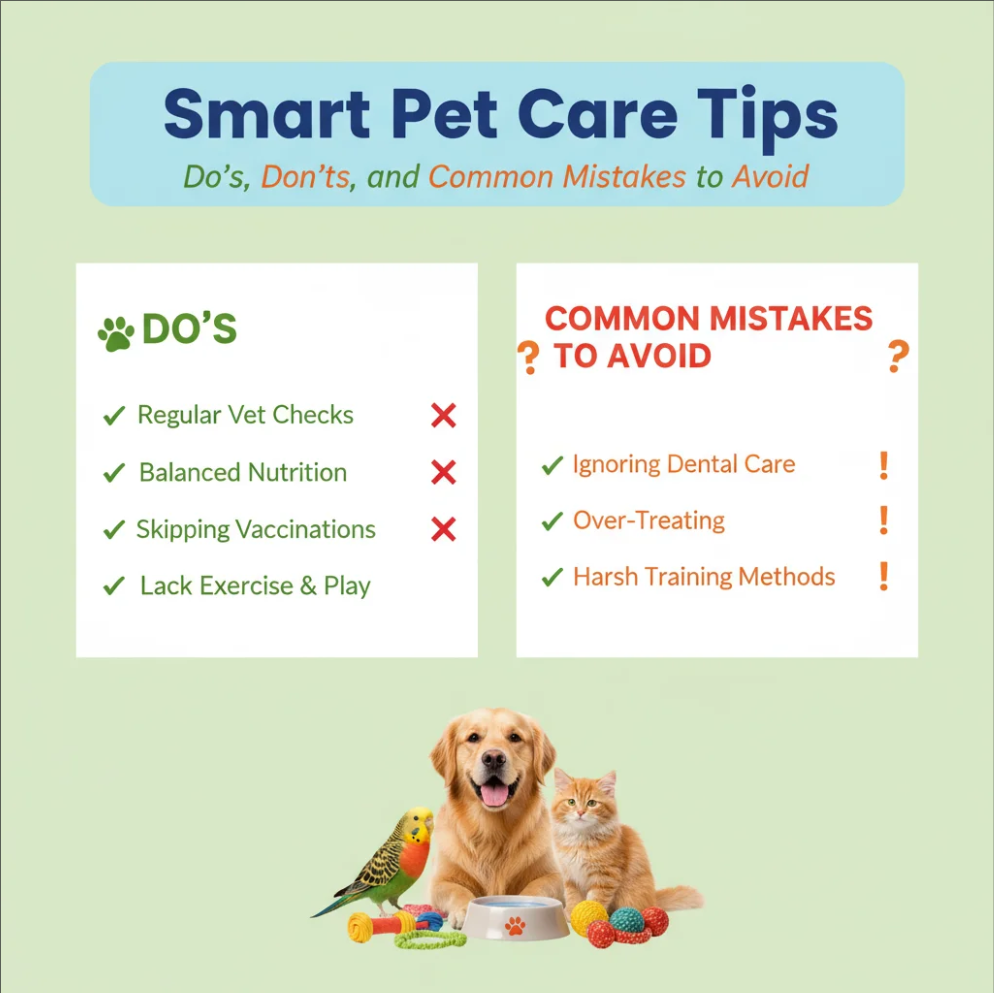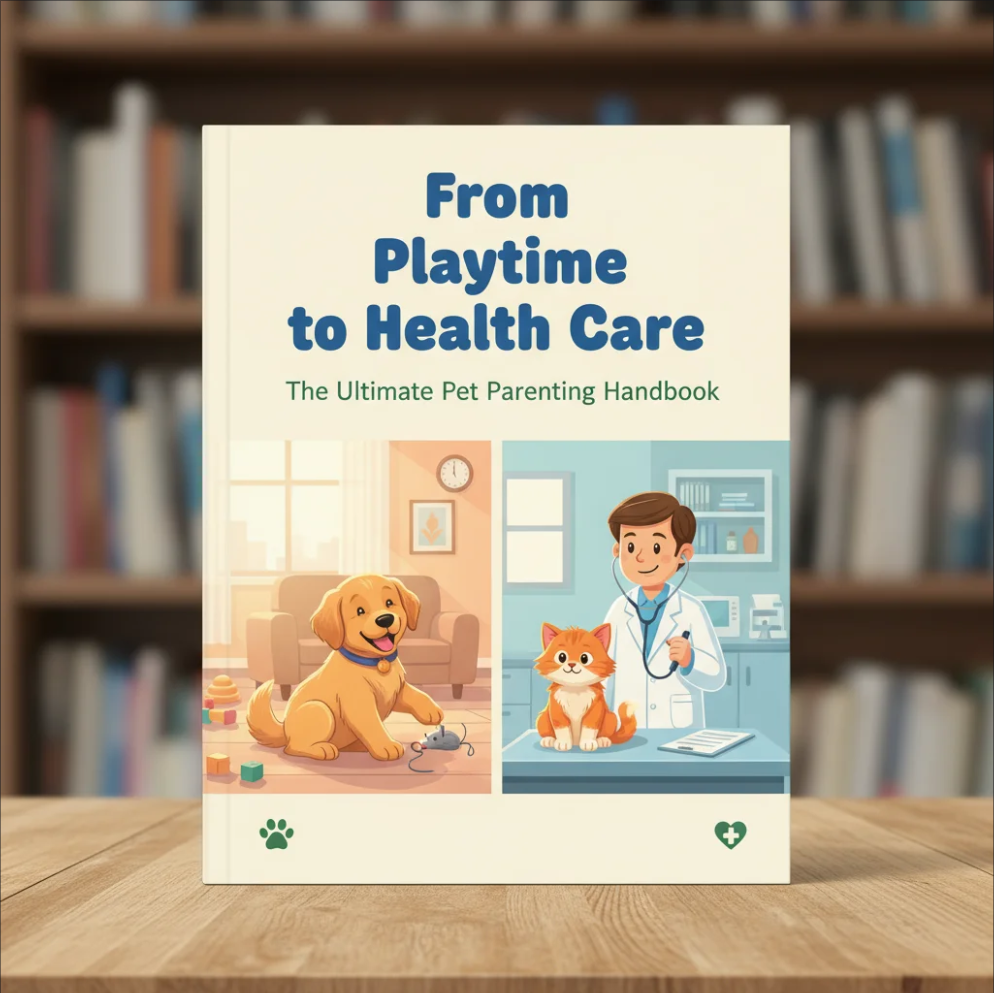Creating the Perfect Home for Your Cats and Dogs to Thrive
Every pet deserves a home where they feel safe, stimulated, and loved. Whether you have cats, dogs, or both, creating a space where they can thrive is essential for their physical and emotional well-being.
A well-planned home for cats and dogs balances comfort, play, safety, and routine. Thoughtful design and daily care ensure pets stay healthy, active, and happy — giving them a life full of enrichment and love.
🏡 Designing a Pet-Friendly Space
Pets need spaces that meet their natural instincts and comfort needs:
- Separate zones: Cats enjoy vertical spaces like shelves and perches, while dogs need cozy beds and open areas.
- Safe exploration: Ensure furniture, plants, and decorations don’t pose hazards.
- Temperature control: Keep rooms comfortably warm in winter and cool in summer.
- Pet-friendly flooring: Durable, scratch-resistant surfaces reduce mess and injury risks.
A home designed for pets prioritizes freedom, safety, and comfort for both cats and dogs.
🎾 Providing Enrichment and Play
Mental and physical stimulation is crucial for thriving pets:
- Interactive toys: Puzzle feeders, balls, and laser pointers keep minds sharp.
- Scratching posts and climbing structures: Essential for cats to express natural behaviors.
- Exercise opportunities: Regular walks for dogs and indoor play for cats promote health.
- Social engagement: Spend quality time petting, playing, and training your pets daily.
Enrichment prevents boredom, reduces stress, and encourages positive behaviors in both species.
🛡️ Safety and Health Considerations
A thriving pet home isn’t just comfortable — it’s safe:
- Pet-proofing: Hide electrical cords, toxic plants, and small objects.
- Cleanliness: Regular litter box maintenance, grooming, and vacuuming reduce illness.
- Access to water and nutrition: Fresh water and a balanced diet support overall well-being.
- Vet care: Routine check-ups, vaccinations, and preventive care are essential.
Safety measures ensure pets are protected while exploring and enjoying their home.
🕰️ Establishing Routines and Boundaries
Pets thrive on consistency:
- Feeding schedules: Regular meal times prevent overeating and maintain digestive health.
- Play and exercise routines: Predictable activity times reduce stress and anxiety.
- Training and boundaries: Teach dogs commands and designate safe areas for cats.
- Quiet zones: Allow pets to retreat to calm spaces when overwhelmed.
Structured routines help pets feel secure and reduce behavioral problems.
💬 Conclusion: A Home Where Pets Flourish
Creating the perfect home for cats and dogs combines thoughtful design, enrichment, safety, and routine. By addressing both species’ unique needs, you cultivate an environment where pets can grow, explore, and express themselves fully.
A home built for their well-being isn’t just a living space — it’s a foundation for health, happiness, and lifelong companionship.
(more…)



